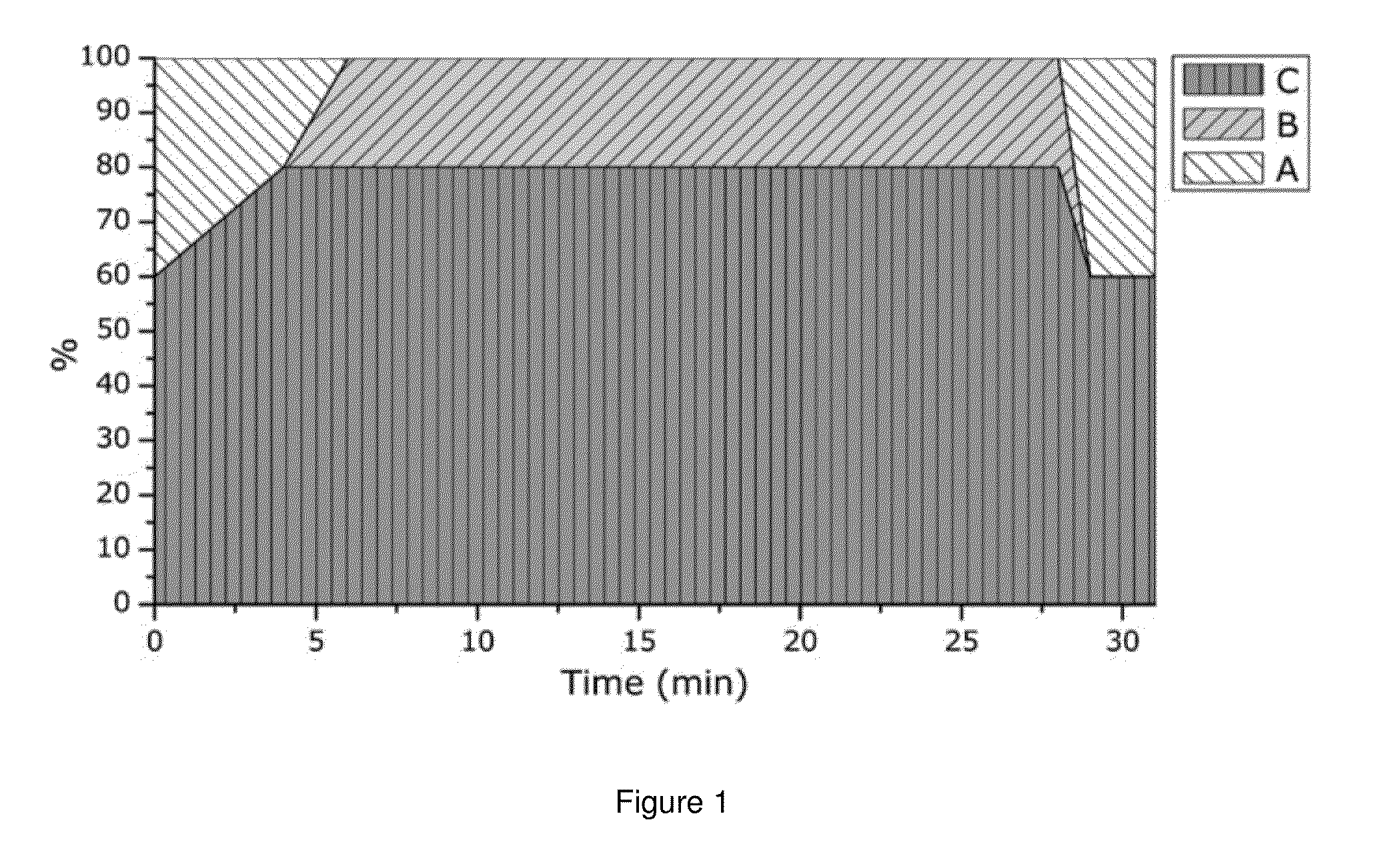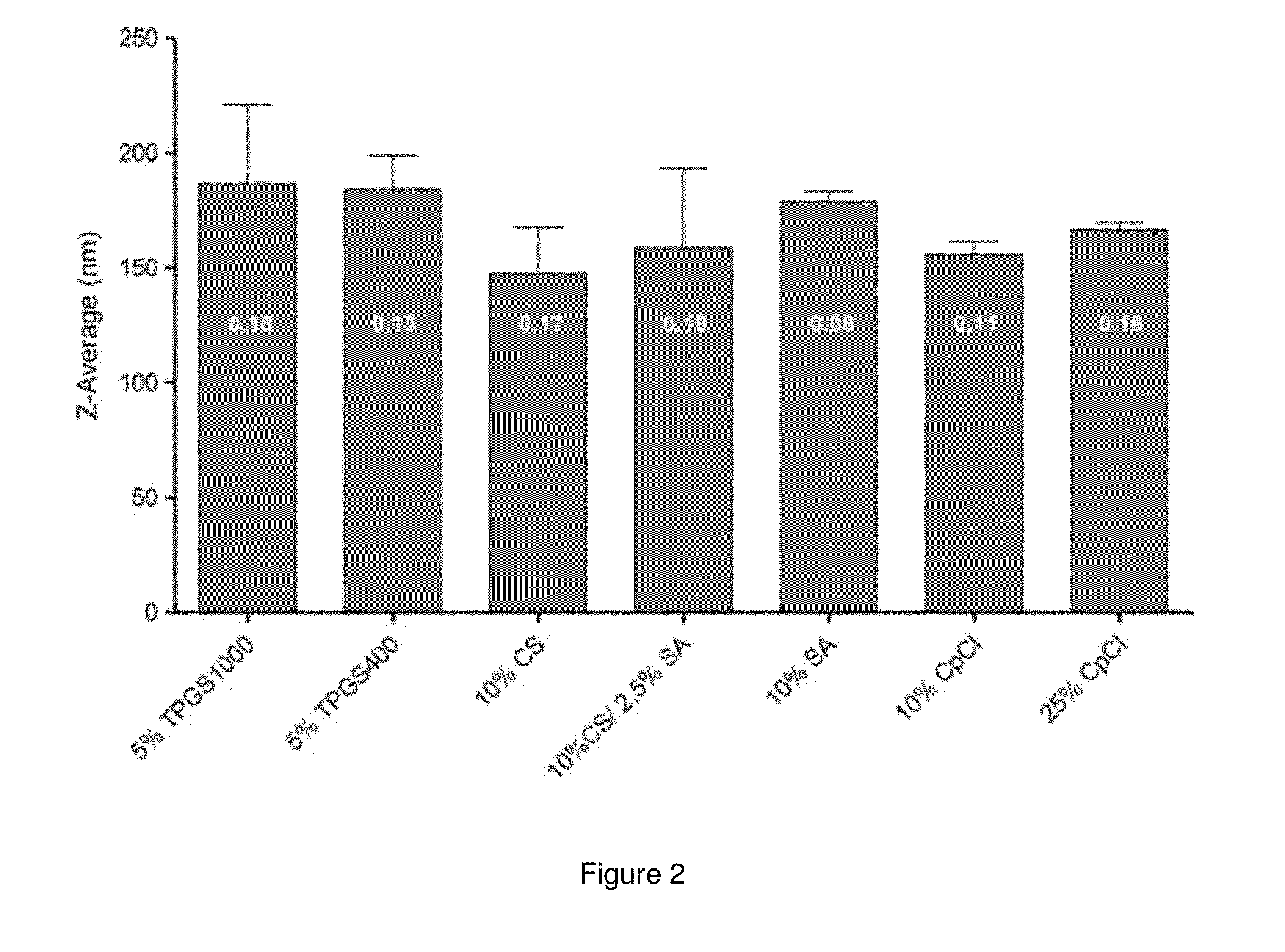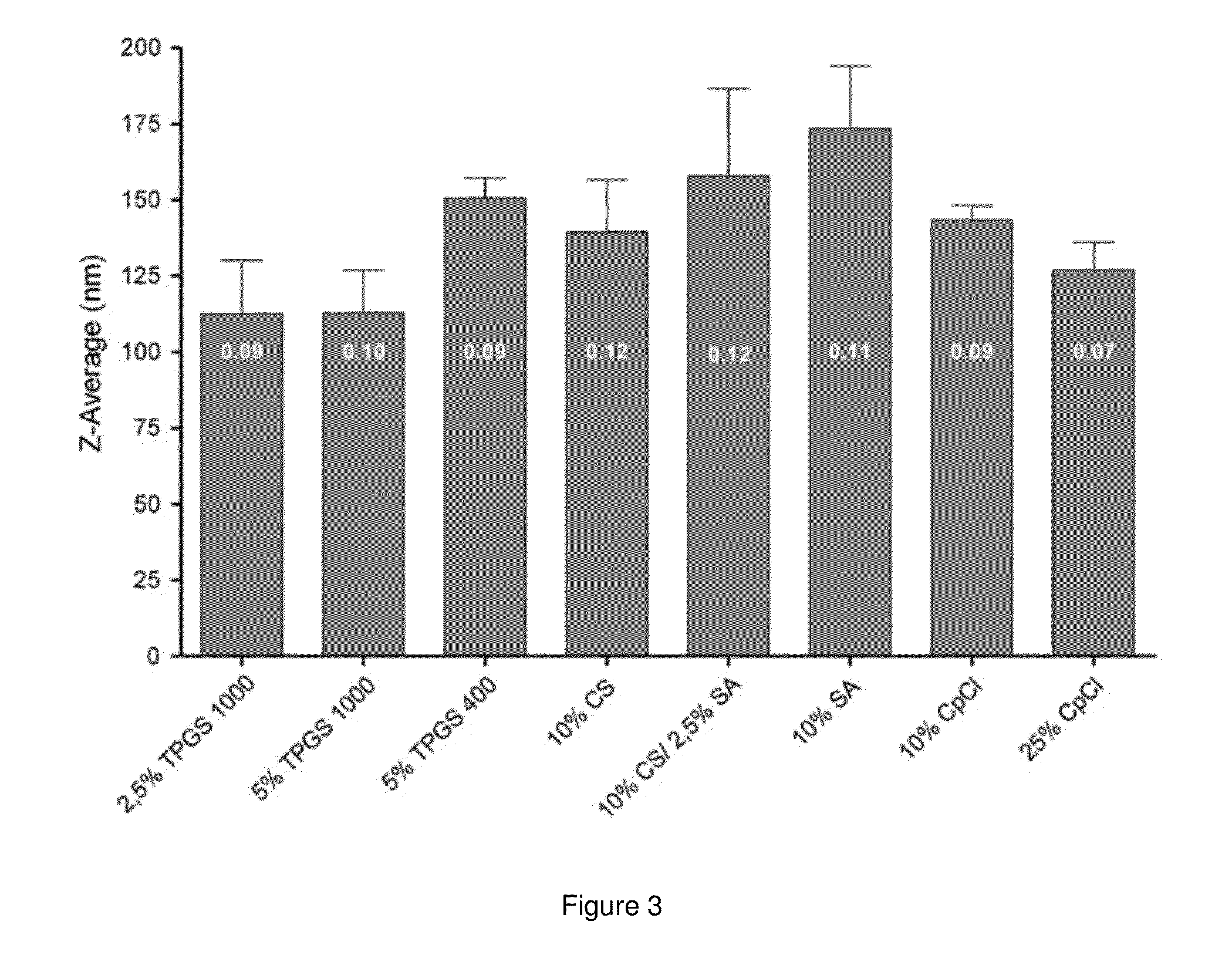Liposomes containing permeation enhancers for oral drug delivery
a technology of liposomes and enhancers, which is applied in the field of liposome compositions, can solve the problems of destabilising or even destroying phospholipid vesicles, difficult development of formulations for oral administration of bcs class iii drugs, and destabilising macromolecules like proteins, heparin, or oligonucleotides, etc., and achieves low oral bioavailability, improved stability of liposomes, and low per
- Summary
- Abstract
- Description
- Claims
- Application Information
AI Technical Summary
Benefits of technology
Problems solved by technology
Method used
Image
Examples
examples
Methods for Preparing Compositions
Materials
[0134]EPC was provided by Lipoid GmbH (Ludwigshafen, Germany). GCTE was provided by Bernina Plus GmbH (Planegg, Germany). TPGS 1000 and TPGS 400 were supplied by Eastman (Kingsport, Tenn., USA). CpCl was purchased from Roth (Karlsruhe, Germany). CS was obtained from Prodotti Chimici e Alimentari S.p.A (Basaluzzo, Italy). Cholesterol, SA, fluorescein isothiocyanatedextran (Mw 70000 Da) (FITC-dextran), pancreatin from porcine pancreas (8×U.S.P.), octadecanethiol and sodium taurocholate (minimum 95% TLC) were purchased from Sigma-Aldrich (Taufkirchen, Germany). Culture media, fetal bovine serum (FBS) and supplements were purchased from Biochrom (Berlin, Germany). 5(6)-Carboxyfluorescein was provided by Serva (Heidelberg, Germany). All other chemicals were obtained in the highest purity from the usual commercial sources.
[0135]Pancreatin mixture contains non-soluble components, which could disturb the fluorescence measurements. In order to remov...
PUM
| Property | Measurement | Unit |
|---|---|---|
| diameter | aaaaa | aaaaa |
| polydispersity index | aaaaa | aaaaa |
| glass transition temperature | aaaaa | aaaaa |
Abstract
Description
Claims
Application Information
 Login to View More
Login to View More - R&D
- Intellectual Property
- Life Sciences
- Materials
- Tech Scout
- Unparalleled Data Quality
- Higher Quality Content
- 60% Fewer Hallucinations
Browse by: Latest US Patents, China's latest patents, Technical Efficacy Thesaurus, Application Domain, Technology Topic, Popular Technical Reports.
© 2025 PatSnap. All rights reserved.Legal|Privacy policy|Modern Slavery Act Transparency Statement|Sitemap|About US| Contact US: help@patsnap.com



